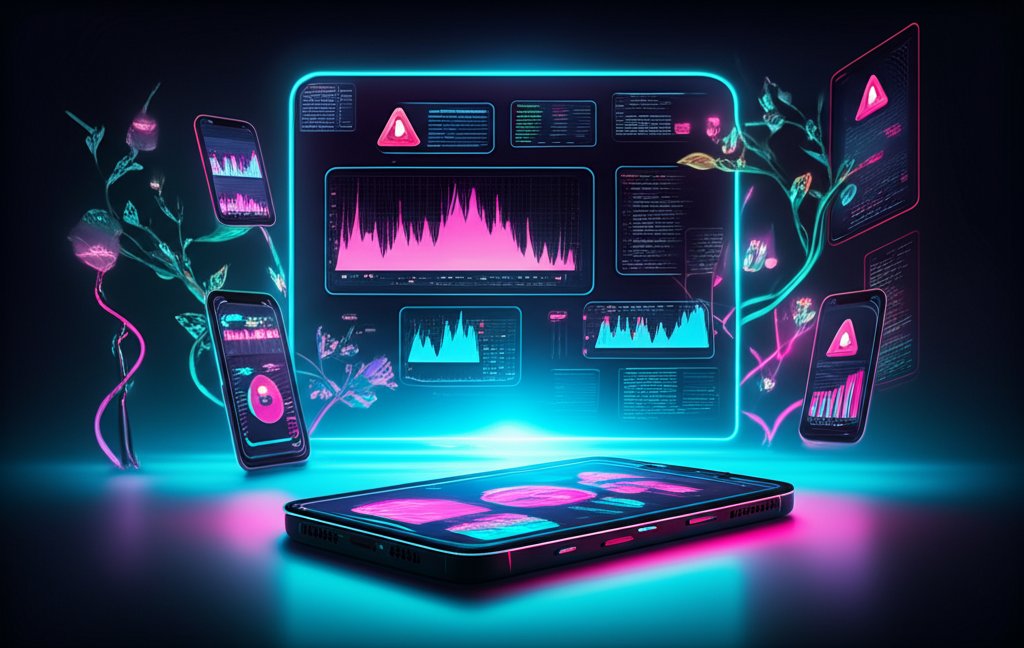Finding the right emergency alert app can feel overwhelming. With so many claiming to be the best, how do you sift through the noise and choose one that truly fits your needs? The first step is understanding what features are most crucial for your specific circumstances.
At a glance:
- Prioritize real-time alerts and location sharing based on your threat model.
- Understand subscription costs and free alternatives.
- Consider ease of use, especially under stress.
- Ensure the app covers your geographical area of concern.
- Look for features like emergency contact integration and offline access.
Defining Your Emergency Alert Needs: A Personal Threat Model
Before you even rate app features, define the situations you want to be prepared for. Are you concerned about severe weather? Personal safety in urban environments? Natural disasters? Do you have medical conditions that require specific alerts or information sharing? Answering these questions will help you prioritize features.
For example, someone living in the Midwest might prioritize severe weather alerts from FEMA, while someone in a city prone to crime might value the real-time incident reporting of Citizen. A person with allergies might prefer Medical ID. The clearer you are on your specific threat model, the easier it will be to evaluate apps effectively.
Key Features to Evaluate in Emergency Alert Apps
Here’s a breakdown of essential features and what to look for:
- Real-Time Alerts: How quickly and reliably does the app deliver notifications about nearby emergencies? Look for apps that use multiple channels (push notifications, SMS, email) to ensure you receive critical information.
- Location Sharing: Can you easily share your location with emergency contacts or services? Some apps offer real-time tracking, which can be invaluable in a crisis.
- Emergency Contacts: Does the app allow you to pre-program emergency contacts who can be alerted with a single tap?
- Offline Access: Can you access essential information and features (like first aid guides or emergency contact lists) even without an internet connection?
- Coverage Area: Does the app provide alerts for your specific geographical area of concern, whether it’s your local neighborhood or the countries you travel to?
- Ease of Use: Is the app intuitive and easy to navigate, especially under stress? A complex interface can be a hindrance in an emergency.
Free vs. Paid: Understanding the Cost of Safety

Many emergency alert apps offer both free and paid versions. Free versions often provide basic alert functionality, while paid subscriptions unlock premium features like enhanced location sharing, 24/7 support, and ad-free experiences.
Consider these questions:
- Does the free version meet your basic needs? If you only need basic weather alerts, a free app might suffice.
- Are the premium features worth the cost? Evaluate whether the added functionality justifies the subscription fee. For example, is continuous location tracking crucial for your peace of mind or your loved one’s safety?
- Are there hidden costs or intrusive ads? Some “free” apps bombard users with ads or aggressively push them to upgrade.
Example: NewsBreak is free but some users complain about ads. Citizen’s free version has limited functionality and aggressively promotes its paid “Protect” tier, which some find intrusive.
Comparing Popular Emergency Alert Apps: A Quick Guide
| App | Focus | Key Features | Cost | Notes |
|---|---|---|---|---|
| FEMA | Disaster preparedness | Real-time weather alerts, emergency shelter finder, personalized disaster tips | Free | Official source for U.S. disaster information. |
| Citizen | Local crime and incidents | Real-time emergency alerts, live video of incidents, share safety status | Free / $19.99/month (Protect) | Can be prone to irrelevant alerts; subscription required for full functionality. |
| NewsBreak | Local news and alerts | Local news updates, weather alerts, community news | Free / $1.99/month (Premium) | Useful for staying informed; some concerns about ad frequency and AI-generated content. |
| Medical ID | Medical information sharing | Lock screen accessibility, emergency contact sharing, medical profile creation | Free / $4.99 (Premium) | Essential for those with medical conditions or allergies. |
| Red Panic Button | Quick alert sending | One-tap panic button, social media integration, voice recording | Paid | Simple and effective for quickly alerting contacts in dangerous situations. |
The Importance of User Reviews and Ratings

Always check user reviews and ratings before committing to an emergency alert app. Pay attention to common themes and complaints. Do users report frequent false alarms? Are the alerts timely and accurate? Is customer support responsive?
However, take reviews with a grain of salt. Some reviews may be biased or outdated. Look for patterns and consider the source of the reviews.
Practical Playbook: Choosing Your Emergency Alert App
Here’s a step-by-step guide to selecting the right app for you:
- Define your threat model. What types of emergencies are you most concerned about?
- Identify must-have features. Prioritize features based on your threat model.
- Research and compare apps. Use the table above and other resources to compare different apps.
- Read user reviews. Pay attention to common themes and complaints.
- Download and test a few apps. Most apps offer free versions or trials, so you can try them out before committing to a subscription.
- Customize settings. Configure the app to your specific needs and preferences.
- Educate yourself. Familiarize yourself with the app’s features and how to use them in an emergency.
- Share with family. Help your loved ones download and set up one of the top emergency apps too.
Quick Answers: Common Questions and Misconceptions
- Q: Do I really need an emergency alert app?
- A: While not essential for everyone, they provide an extra layer of security and information, especially in areas prone to natural disasters or high crime rates. If peace of mind is a priority, an emergency alert app can be a worthwhile investment.
- Q: Can I rely solely on emergency alert apps for my safety?
- A: No. Emergency alert apps should be part of a broader preparedness plan. They are tools to provide information, but you should also have backup communication methods and emergency supplies. As well, ensure you know what to do in case of emergency.
- Q: Are emergency alert apps accurate?
- A: Accuracy can vary depending on the app and the data sources it uses. Official sources like FEMA and local government agencies are generally more reliable. However, even these sources can sometimes be inaccurate or delayed.
- Q: Will an emergency alert app drain my phone battery?
- A: Some apps that constantly track your location can drain your battery quickly. Choose apps that use location services efficiently or allow you to customize tracking intervals.
Actionable Close: Choosing the Right Tool for Your Safety
Ultimately, the best emergency alert app is the one that best meets your individual needs and preferences. By carefully evaluating your threat model, prioritizing essential features, and testing different apps, you can find a tool that provides peace of mind and helps you stay safe in any situation. Don’t just passively search “rate app” – actively assess each app against your specific needs. To get a broader understanding of which apps are available and to help guide your choice, Here are a few options, depending on the surrounding context: * Essential Emergency App Guide * Top 10 Emergency Apps * Find Safety with These Apps * Stay Safe: Emergency App Guide * Top Emergency Apps to Download.
- Medicare Mobile App: Manage Your Healthcare On The Go - October 8, 2025
- First Convenience Mobile App: Bank Anytime, Anywhere Now Easier - October 7, 2025
- Delta Community Credit Union Mobile App: Bank Easier on the Go - October 6, 2025









